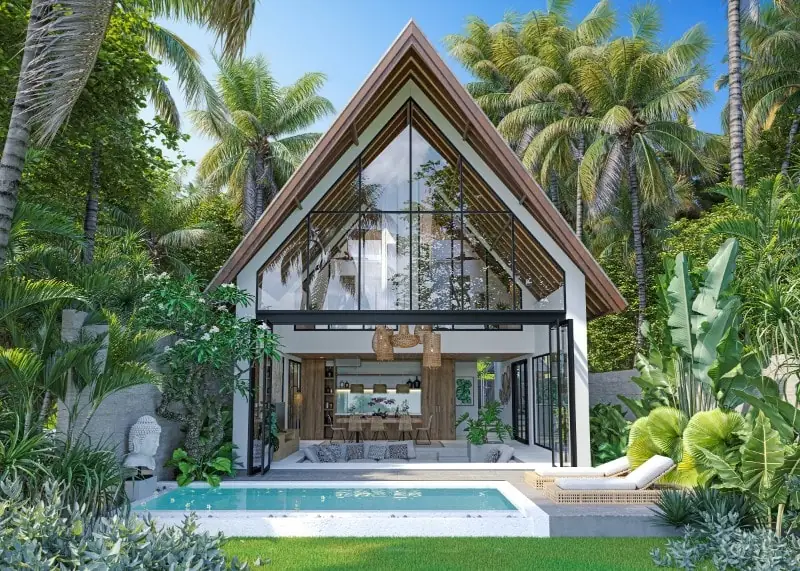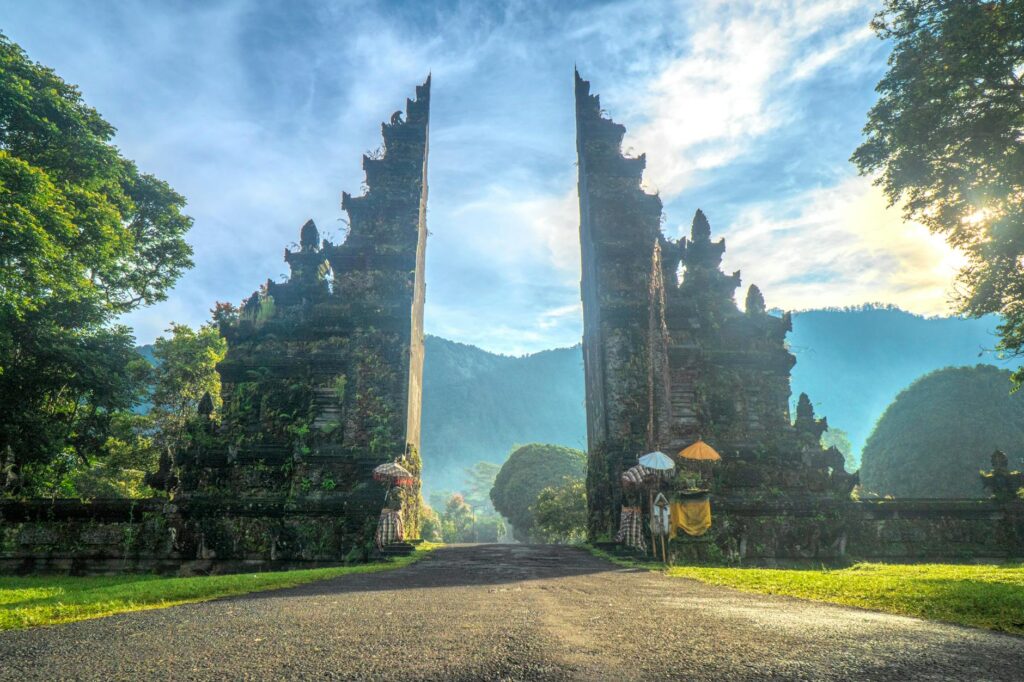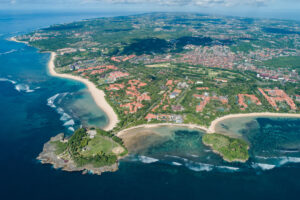A Market Reborn with Global Confidence
BaliWide Exclusive , Turning Opportunity Into Reality
As we step into 2025, Bali’s property market has not only recovered from the disruptions of recent years , it’s evolved into one of Southeast Asia’s most dynamic real estate ecosystems. A potent mix of foreign investment, government reforms, digital nomad inflows, and infrastructure expansion is reshaping the island’s landscape.
From the tranquil beachfronts of Seraya to the bustling cultural hub of Ubud and the high-end enclaves of Canggu and Pererenan, Bali’s real estate is witnessing its most significant transformation in a decade.
The keywords driving 2025’s market narrative are stability, sophistication, and sustainability.
Let’s dive into the forces shaping this new era , and why investors from across the globe are once again setting their sights on Bali.
Market Momentum: Numbers That Speak

According to property analytics from early 2025, Bali’s overall real estate value has seen an average appreciation of 12–18% year-on-year, with premium areas recording spikes up to 25%.
- Canggu & Pererenan lead the luxury villa market, where price per are (100m²) can now reach IDR 1.5–2.5 billion in prime zones.
- Uluwatu and Ungasan have become the “next frontier,” offering ocean-view land with values climbing 10–15% annually.
- North and East Bali , particularly Seraya, Amed, and Tejakula , are attracting early adopters who see long-term growth in undeveloped coastal belts.
Interestingly, the rental market is equally robust. Bali’s mid- to long-term villa rentals surged by over 30% in occupancy rates during 2024, driven by returning expatriates, digital nomads, and regional entrepreneurs relocating for lifestyle and tax efficiency.
In short, Bali’s property market in 2025 is defined by high demand, limited supply, and a growing appetite for long-term ownership structures.
Who’s Buying: The New Faces of Bali Investment
The demographics of Bali’s property buyers have evolved remarkably in 2025:
- Southeast Asian buyers (Singapore, Malaysia, Thailand) now make up a significant new wave, drawn by Bali’s lifestyle and yield potential.
- Europeans, especially from Germany, France, and the Netherlands , continue to invest in eco-luxury villas, often as semi-retirement homes.
- Australians, Bali’s historical backbone market, remain dominant, but many have shifted toward co-ownership models or off-plan investments for better ROI.
- Tech entrepreneurs and crypto investors from Dubai, Hong Kong, and Seoul have entered the market with “hybrid lifestyle” purchases , homes that double as digital workspaces.
The result: a far more diverse, globally aware investor pool, redefining what “Bali luxury” means.
These buyers are younger, more mobile, and value-driven , not just seeking beachfront views, but connectivity, community, and eco-design.
Government Reforms & Legal Clarity: Simplifying Ownership
Indonesia’s government has taken deliberate steps toward property law modernization, and 2025 marks a milestone year.
Key updates include:
- Ease of foreign ownership through long-term lease extensions and streamlined nominee structures.
- Digital registration systems for land certificates (Sertifikat Elektronik), reducing fraud and expediting transactions.
- Golden Visa programs attracting investors with minimum property thresholds (IDR 5–10 billion) and renewable stay permits.
- Tax harmonization policies that encourage transparency and investment inflows.
For Bali property buyers, these developments mean fewer bureaucratic barriers and greater confidence in ownership security , particularly through Hak Pakai (Right of Use) and long-term leasehold agreements that can now extend up to 80 years in total duration.
The Hotspots of 2025: Where Growth Meets Lifestyle
Canggu & Pererenan: The Epicenter of Global Demand
Still reigning supreme, these neighborhoods are witnessing a subtle shift from bohemian surfer enclaves to sophisticated lifestyle districts.
Think fine dining, wellness architecture, co-working compounds, and boutique villas fetching nightly rates upwards of USD 300–600.
Uluwatu & Ungasan: Clifftop Revival
Developers are investing heavily in sustainable hilltop resorts and modern cliff villas. The expansion of new bypass roads and the upcoming Jimbaran–Uluwatu transit route is making these areas more accessible and lucrative.
Seraya & East Bali: The “Next Canggu”
Quiet, scenic, and affordable — Seraya’s coastal strip has become a magnet for visionaries. Land here is still 60–70% cheaper than South Bali, yet offers direct access to pristine beaches and the upcoming Amed–Seraya coastal road project, predicted to boost tourism by 2026.
Ubud: Wellness Capital 2.0
While Ubud remains the island’s spiritual heart, developers are now integrating eco-tech — solar power, water recycling, bamboo architecture — into villa projects. The wellness market is worth over USD 250 million annually in Ubud alone.
North Bali: Calm Luxury
Lovina and Tejakula are seeing an influx of buyers seeking seclusion and space, often combining villas with boutique hospitality ventures.
Price Outlook 2025–2026: Upward but Stabilizing
The consensus among local real estate experts is that 2025 will maintain steady appreciation but with slower, more sustainable growth than the post-pandemic boom of 2022–2024.
Projected trends:
- Land prices: +8–12% average growth.
- Construction costs: +10–15%, largely due to rising material and labor costs.
- Villa resale values: +10–20% in strategic zones.
- Rental yields: 8–12% annually, with prime villas reaching 15% ROI.
This means Bali remains a high-performing but maturing market, where value lies in design innovation, location foresight, and sustainability credentials rather than speculation alone.
Sustainability: The New Currency of Value
In 2025, “green” isn’t just a trend , it’s a market requirement.
Developers now integrate:
- Solar roofing & smart grids
- Rainwater harvesting & greywater recycling
- Local materials like bamboo, teak, and limestone
- Low-footprint construction practices
Buyers are increasingly motivated by eco-ethics, with many properties achieving Green Building certification or using ESG-focused development models.
Eco-villas can command up to 25% premium over conventional builds , and are particularly favored by long-term foreign lessees and hospitality investors seeking brand credibility.
Digital Nomads & the Remote Economy
The “Work from Paradise” era is fully mainstream in 2025. Bali’s Digital Nomad Visa (launched in late 2024) allows remote workers to stay up to 5 years tax-free for offshore income.
This has triggered:
- Increased demand for co-living villas
- Growth in mid-tier apartment developments in Canggu, Berawa, and Sanur
- A rise in high-speed internet infrastructure supported by both government and private telecom investments
The result is a new property sub-market , functional-luxury homes that merge residential comfort with workspace design.
Infrastructure & Connectivity: Building the Future
Several key infrastructure projects are shaping the 2025 property map:
- Gilimanuk–Mengwi Toll Road nearing completion, improving West Bali access.
- North Bali Airport project under feasibility review, with potential groundbreaking in 2026.
- Water supply and waste management upgrades in Denpasar and Badung.
- Expansion of Ngurah Rai International Airport for increased international arrivals.
These projects are more than logistical improvements , they redistribute real estate opportunity to areas previously underdeveloped.
Challenges: Growth vs. Authenticity
While optimism is high, Bali’s property market also faces challenges:
- Overdevelopment pressure in Canggu and Seminyak.
- Water scarcity concerns in southern regions.
- Rising construction costs and shortage of skilled local labor.
- Cultural balance issues, as communities navigate modern development with traditional values.
To sustain long-term value, investors and developers must align with community-based planning, environmental protection, and ethical investment frameworks.
The Investor’s Perspective: Why 2025 Is a Prime Year
Bali’s property investment case remains strong for five key reasons:
- High ROI and rental demand
- Improved legal frameworks
- Global investor confidence returning
- Growing eco-luxury niche
- Infrastructure-led growth corridors
With inflation stabilizing and tourism surpassing pre-pandemic highs (forecasted 7.5 million visitors in 2025), the island offers both lifestyle satisfaction and robust financial upside.
The Future Vision: Beyond Villas
2025 is also witnessing diversification beyond villas.
New trends include:
- Branded residences managed by hospitality groups.
- Serviced apartments for medium-term rentals.
- Boutique resorts and wellness retreats in secondary regions.
- Co-living hubs integrating community-based living with resort amenities.
The blending of hospitality and residential real estate is creating hybrid investment models , where owners can enjoy their property part-time and rent it professionally when away.
BaliWide Insight: Where the Smart Money Flows
At BaliWide, our market observations indicate that East Bali (Seraya, Jasri, Amed) and Bukit South Ridge (Ungasan–Pecatu) will outperform over the next 3–5 years.
Why?
- They offer entry-level affordability with high appreciation potential.
- Government-backed infrastructure is improving access.
- Investors are diversifying away from saturated zones like Canggu.
- Eco-conscious developments align with long-term buyer sentiment.
For investors seeking both growth and legacy, these are the next opportunity corridors , where today’s pioneers will define tomorrow’s luxury.
Bali 2025 , A Market of Meaning and Momentum
Bali’s property market in 2025 is not just about rising prices , it’s about refined purpose and sustainable prosperity. The island is entering a new chapter where profit, lifestyle, and community can coexist harmoniously.
Whether you’re a buyer, developer, or dreamer, the opportunities in Bali today are real , and ripe for those who understand the balance between vision and values.
At BaliWide, we believe 2025 is the year to turn opportunity into reality with insight, integrity, and a deep respect for the island that continues to inspire the world.
✅ BaliWide Exclusive
Turning Opportunity Into Reality
Your trusted source for insights into Bali’s evolving real estate landscape.





